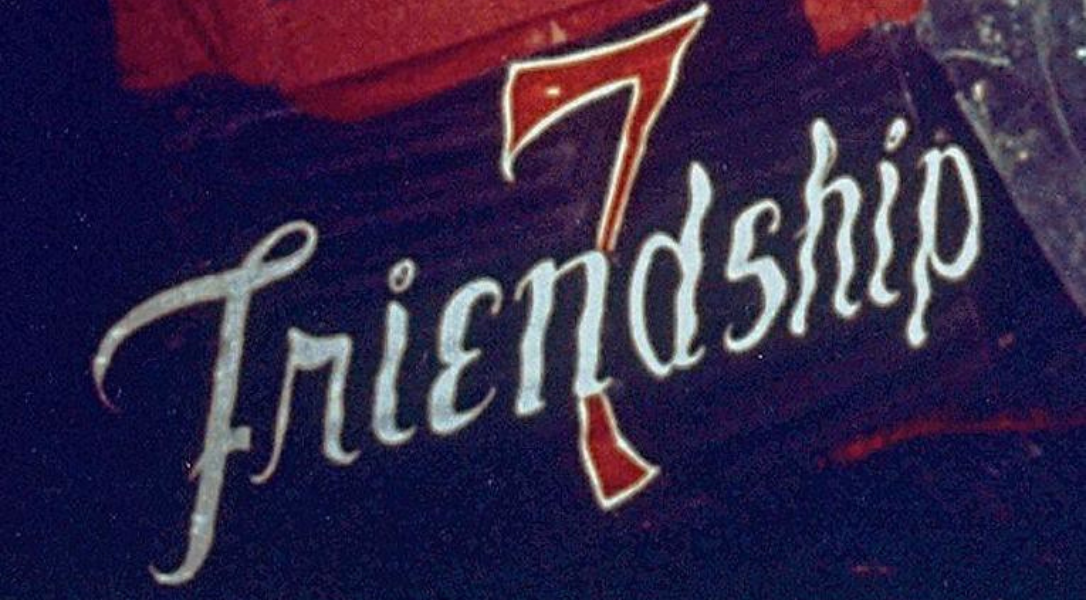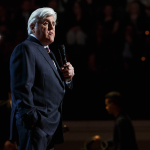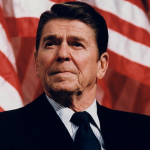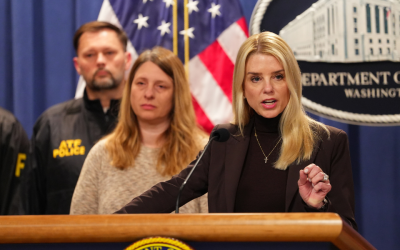Amid Cold War tensions and the soaring race to dominate space, February 20, 1962, marked a monumental moment in history.
One man’s courage and determination would forever change the course of the Space Race, cementing his place in the history books and making him a symbol of American perseverance in the face of global competition.
The stakes were high, but this historic flight proved the U.S. had the right stuff to claim its place at the forefront of space exploration.
Creation of NASA
Sputnik made the Cold War feel colder in the U.S.
Three months after the Soviets put their satellite into orbit, the U.S. launched the Explorer 1 satellite on January 31, 1958. The Space Race was close, but the U.S. was still in second place.
President Dwight D. Eisenhower signed the Space Act of 1958 in July, which officially created NASA.
Project Mercury Program
NASA officially launched the Mercury program on April 9, 1959 with the goal of putting a man into space.
NASA also announced on April 9 who the astronauts selected for this new program were:
- Alan Shepard
- Gus Grissom
- Gordon Cooper
- Wally Schirra
- Deke Slayton
- John Glenn
- Scott Carpenter
They became known as the Mercury 7 Astronauts.
The U.S. launched Alan Shepard on the first human space flight on May 5, 1961, but it was a sub-orbital flight that was to test the space craft’s abilities and to prove that NASA could successfully and safely return a man from space.
The second manned flight occurred two months later when Gus Grissom was launched for a 2nd sub-orbital flight on July 21.
The results of and lessons learned from the Shepard and Grissom flights meant that it was time to put an American astronaut into orbit.
John Glenn was up next.
John Glenn was born on July 18, 1921, in Cambridge, Ohio. He later earned his private pilot’s license in college, but he left college in March 1942 to become a pilot in the U.S. Marine Corps.
Glenn flew 59 combat missions in F4 Corsair in World War II. He received two Distinguished Flying Crosses and ten Air Medals during his service during the war.
He later served in the Korean War where he flew another 90 combat missions and shot down two Soviet MIGS.
After Korea, Glenn became a test pilot for the U.S. Navy. By this point, Glenn was 36 years old and had racked over 9,000 hours of flight time with around 3,000 in jet aircraft.
Friendship 7
Glenn applied for the Mercury program, even though the cut off for age was 40. Because of his experience and qualifications, he was accepted and he was selected as one of the Mercury 7 astronauts on April 9, 1959.
Glenn became the back-up for the first two manned sub orbital flights.
He was selected for the Mercury Atlas 6 flight that would finally put an American into orbit.
Glenn named his spacecraft the Friendship 7. He later said this was for the relationships he had developed and for the number of astronauts in the Mercury Program.
The flight was originally scheduled for January 16, but was postponed because of problems with the Atlas rocket fuel tanks.
The launch was rescheduled for February 14, but canceled, because of weather. On the 18, the forecast looked promising for a go on February 20.
First American in Orbit
Just a few minutes after 6 AM on February 20, 1962, John Glenn climbed into the Mercury capsule and began his mission pre-checks while the ground crew bolted him in.
At 9:47 AM, the Atlas rocket engines ignited, and the Friendship 7 began its climb through the sky.
The Friendship 7 continued to climb and at 9:52 AM entered into Earth orbit at 17,544 MPH.
2nd Orbit
As it was beginning its 2nd orbit passing Cape Canaveral, a system alarm was triggered. The “Segment 51” alarm indicated that the heat shield might have become dislodged for the spacecraft.
This was significant because the heat shield was critical for a safe reentry.
Ground units assessed this as something to do with the shield alarm, but did not inform Glenn of the issue.
3rd Orbit
Now in his 3rd pass and low on fuel, Glenn drifted over Australia preparing for his return to earth
As the Friendship 7 crossed the Pacific, the “Segment 51” alarm was being debated back on the ground.
When Glenn asked ground control if something was wrong, they told him that it was suspected that the heat shield had come loose.
Glenn stated to the ground crews that there had been no unusual noises or bumping during the flight and asked if the alarm could simply be faulty?
It was decided not to jettison the retro rocket pack on reentry that was positioned over the heat shield.
Glenn was notified of the plan, and preparations were made to begin reentry.
As the Friendship 7 crossed over California, the retro rockets were fired to slow the spacecraft down.
When asked if the engines were firing, Glenn replied, “Are they ever? It feels like I’m going back to Hawaii!”
The spacecraft quickly began losing altitude making its way towards touchdown in the Atlantic.
The Friendship 7 splashed down about 220 miles northwest of Puerto Rico, just 40 miles short of the intended target zone.
Glenn would be recovered by the USS Noa. The ship had spotted the parachuting craft and radioed to Glenn that they would be there in 17 minutes.
He was quickly removed from his spacecraft and hoisted by helicopter and lowered onboard the Noa.
His entire journey from launching and three trips around the Earth had taken 4 hours and 55 minutes.
Retirement
John Glenn realized that he would not be eligible for the Apollo Program because of his age.
He officially retired from NASA and the Marine Corps in 1965.
Glenn would go on to run for State Senator in Ohio, winning the seat and serving from 1974 to 1999.
He was later afforded the opportunity to fly to space one last time on the Space Shuttle, and on October 29, 1998, John Glenn became the oldest person to fly in space at the age of 77.
John Glenn died in Columbus, Ohio on December 8, 2016 at the age of 95.
Are you enjoying 24/7’s deep dives into recent and not-so-recent history? Would you like to see more stories like this one? If so, reply back to [email protected] and let our Editorial Team hear from you!
For now, keep an eye on your inboxes Thursdays and Saturdays for new editions of “Today in History” from the 24/7 team!
Also, be sure to sign up for 24/7’s Exclusive “Choose the News” Focus Group for your chance to vote on and submit commentary in our Featured Story each week!










